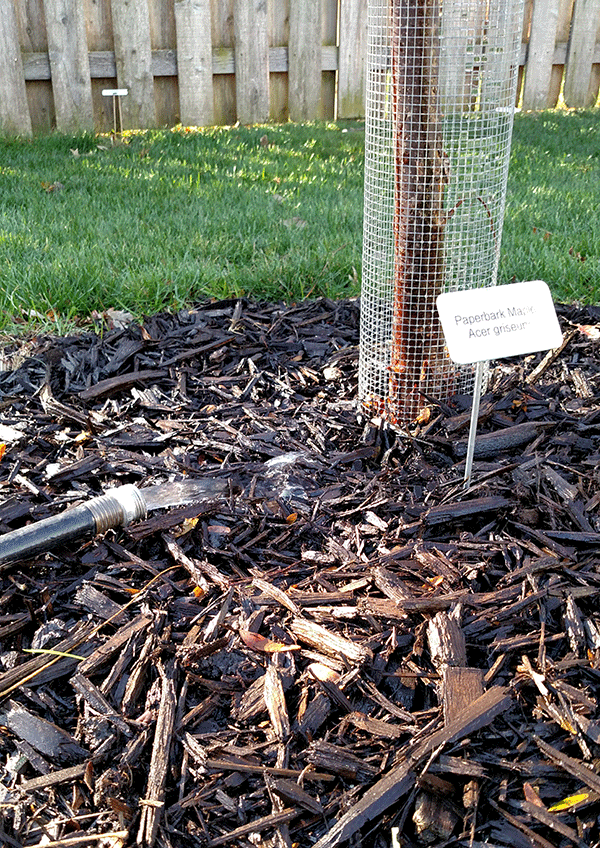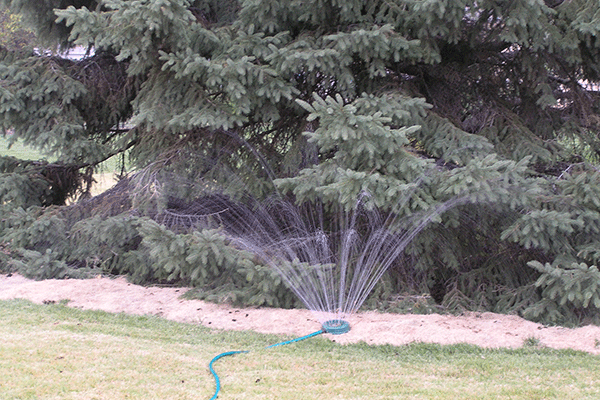When we think of droughts we often think of soaring heat, lack of rainfall and summer. We never stop and think that a drought can happen anytime of the year in any season. Winter droughts do as much damage, maybe even more, as summer droughts. This is because we tend to not think about our landscape plants needing any water during late fall and winter.
 Winter watering should only be done when the ground is not frozen. Image from Scott Evans, Nebraska Extension.
Winter watering should only be done when the ground is not frozen. Image from Scott Evans, Nebraska Extension.Effects of Winter Dryness
When the soil is dry it is not able to buffer temperature swings. It also allows the frost to penetrate deeper into the soil profile. Frost heaving can result from dry soils pushing newly planted perennials, trees and shrubs out of the ground and exposing their roots. Often the damage is irreversible since we rarely check out landscapes during the winter months and the effects are often invisible until spring.
Winter Watering Tips
Watering during winter should only be done when the ground is not frozen and the daytime temperature is above 40°F. Water when we have gone about 14 days without any measurable snowfall or rain. Check for soil moisture by pushing a long-bladed screwdriver into the ground. If it penetrates the soil easily, the soil has enough moisture and watering is not necessary.
Newly installed plants should receive first priority then move on to the established ones. Trees should receive about 10 gallons of water per inch diameter and the water should be applied on all sides of the plant. Perennials should receive about one gallon of water per foot of plant height.
There is no need to use any fertilizers when watering and it is recommended to use a garden hose or watering can. Plants will also benefit from a generous amount of wood-chipped mulch. Trees and shrubs should be mulched about 2”-3” deep extending 18”-24” away from the trunk. Perennials should have about 2”-3” of mulch extending about 12” away from the crown. Never pile mulch against the trunk or crown of plants.
A little bit of winter maintenance can make all of the difference on the plants ability to survive the winter.

